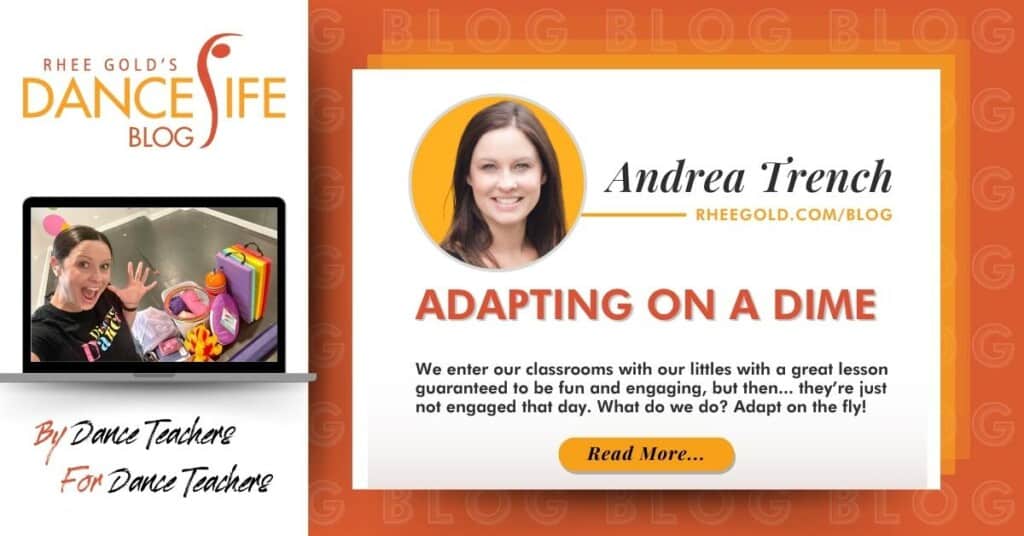Adapting on a Dime

As teachers we can never have too many tools in our toolbox. Afterall, we never know how our students will respond to an activity we present. Will they be excited? Will it keep their attention? Will it challenge them too much that they become frustrated? Or, not enough that they become bored? Whether it’s a barre combination, prop exploration, or across the floor progression, we have to be ready to adapt on a dime to keep the class flowing and the learning going.
When it comes to introducing a new class objective, remember to always Observe, Assess, and Adapt accordingly. Here’s an example of what that could look like.
You teach a tendu combination in your beginning ballet class. You observe your students struggling. Some are looking down or around at others, some are laughing from embarrassment, some are getting frustrated and red. You stop the music and ask if there are any questions. A dancer raises her hand and asks “can I go to the bathroom?”- she definitely wants out of the situation. You demonstrate the combo again, you ask if there are questions, you play the music and… it may be better this time around, but still a struggle. They’re really not grasping the objective of the combination.
Now we need to assess what’s happening to see where they need support. Perhaps the music is too fast. Perhaps their upper and lower body coordination is lacking and they can’t coordinate the port de bras you choreographed with the tendus. Perhaps they are having a hard time remembering the sequencing of the combination. Or, perhaps they are struggling to execute tendus correctly. We observed they were struggling by their behavior and participation, or lack thereof. We assessed where they need support. And now we adapt the combination to meet their needs, so they can thrive.
Perhaps we offer a slower song.
Perhaps we have them do the combination with their hands on their hips or arms in second. Then we can have them just do the port de bras. Then we progress to the arms with the legs together.
Perhaps we teach front and side only, first. Then we progress to back and side only. Then put the entire combination together.
Perhaps we split into partners and watch each other perform tendus. We place our hand on the top of our partner's foot and apply a little pressure as they tendu out, we push gently against their heel as they slide their foot back into first.
Or, perhaps, we add reinforcement props such as a small paper plate or hoop under our feet to help us understand how to execute our tendus.
Adapting on a Dime Through See, Say, Do, Play
I use the See, Say, Do, Play teaching strategy to think of different ways to adapt. This is a strategy I often use to ensure we’re teaching the way our students learn through the visual, auditory, kinesthetic, and tactile senses. Here’s adaptations for each of these learning styles.
SEE:
- add a visual to support learning
- perform in partners or groups where they watch each other and give feedback
SAY:
- turn off the music and everyone sings or says the movement
- assign a catchy phrase, word, chant, etc.
DO:
- change the music to make it slower or faster
- break it up by doing just the arms or legs
- turn it into a student-focused activity where they all work on the objective alone or with a partner
PLAY:
- add a reinforcement prop
- choose a different prop
- perform in partners for tactile feedback
Rather than ditch the activity all together, unless it’s a complete disaster, try to find ways to adapt. We want to always continue challenging our students, but we have to also be prepared to support them where they need help. Be open and willing to adapt to make the learning achievable and meaningful for all.
Andrea Trench is dedicated to helping dance teachers create and deliver content that is research-based and developmentally appropriate for children under the age of 6. Her primary focus is classroom management, conceptual teaching, and foundational movement skill development in early childhood dance education. In addition, Andrea uses her 12 years of experience as a partner in a dance studio to inspire, equip, and empower educators.









